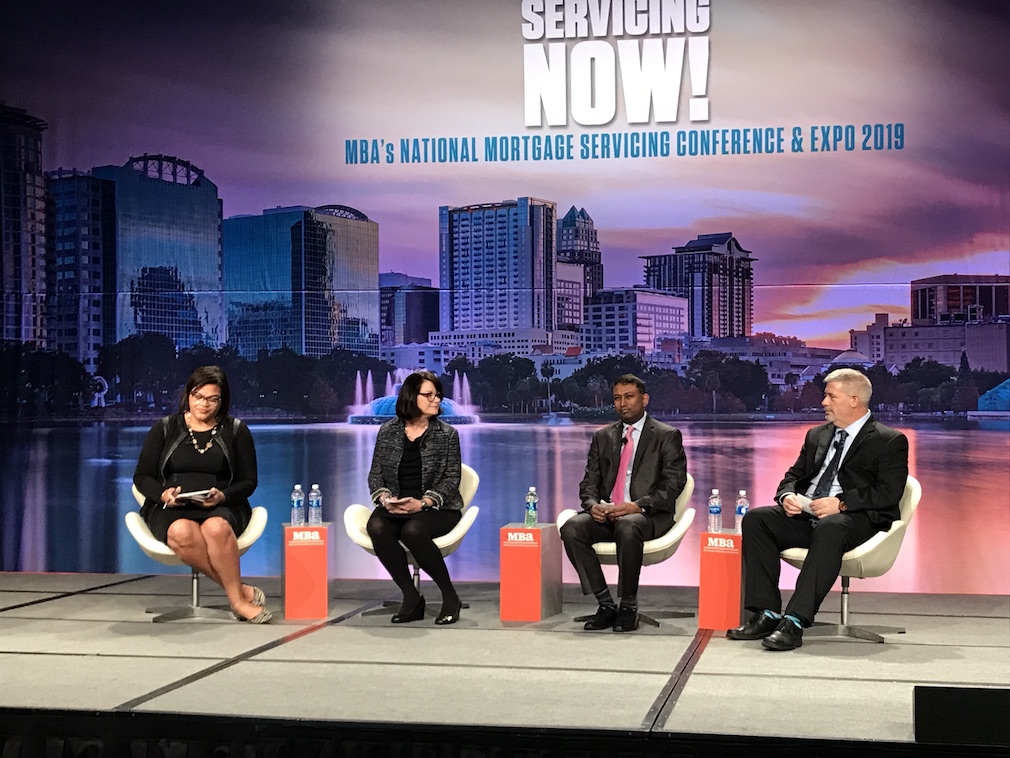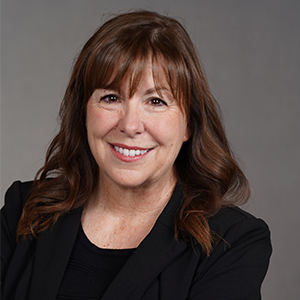After a moving opening session by author Janine Driver — who reminded attendees of the hope they can offer those in foreclosure even if they can’t save the house — leaders from the Federal Housing Finance Agency, U.S. Department of Agriculture and U.S. Department of Veterans Affairs took the stage at the Mortgage Bankers Association’s Servicing conference Tuesday to talk about the future of mortgage servicing.
So what does that future look like? More M&A, more tech investment and, if you’ve got a really long lens, more standardization.
Alanna McCargo, vice president of housing finance policy at the Urban Institute, moderated the discussion with Prasant Sar, supervisory policy analyst at FHFA, Michelle Corridon, deputy director at USDA, and Andrew Trevayne, assistant director for loan and property management at VA.
One of the major challenges facing servicers is the multi-faceted regulations and processes involved when dealing with multiple federal entities. Standardization was a recurring theme during the panel and the audience Q&A. However, although panelists were clearly sympathetic, the nature of the respective agencies’ missions, mandates and borrowers are so different that it’s hard to see how they can make significant changes in this area.
“Alignment has always been a vexing question,” Sar said. “We’re looking at alignment from a higher-level view around direction and intent. The intent is to reduce operational friction, which would reduce costs, and leverage tech, to find more symmetry in those spaces where we can be more in harmony with one another.
“It would be very disruptive to change a bunch of systems. We seek those opportunities to try and figure out where there are intersections, but that’s a huge challenge, and it’s a futuristic place,” Sar said.
Despite the difficulties, the FHFA is continuing to try, specifically in standardizing data. Sar pointed to a recent brief from the Urban Institute as proof of not only the benefits of servicing data standardization, but as proof that servicers would support the move.
One of the roadblocks to the standardization effort is the industry’s historical under-investment in technology.
“The crisis required that servicers and the GSEs invested significant amounts of money at a hurried pace. What we’re seeing now is that investment is slowly cascading into potential other benefits on servicing side,” Sar said.
“At MBA Annual, I saw all the tech booths set up, and I think that as that finds its way into servicing, that would be incredible. We have not quite got there yet.”
One of the reasons for that lag is the nature of loss mitigation, Sar said.
“The trust factor has been built on the front end with origination. With the crisis, we understand why there’s an opportunity here, but I have optimism,” Sar said.
The panelists noted the M&A trend in servicing and the potential for chaos in that process.
“One of the big things in 2019 has been this theme of exits and consolidation in the industry, which obviously signals certain market disruptions,” Sar said. “We look at: How are those exits and consolidations being managed in the marketplace? What parties are stepping in and which are moving away. We look at it regularly, given the nonbank concentration, and remain vigilant in that space.”
During the Q&A session, one attendee asked Sar if the FHFA would rather see 10,000 servicers or just five large ones.
“When I talk about exits and consolidations, from a regulatory perspective, I don’t have a preference on how the market evolves,” Sar said. “I do want it to grow and be a competitive environment.”
McCargo noted the benefits of having a range of servicers, especially in rural markets.
“We are seeing a lot of consolidation. I do think we have to think about what happens when servicers [merge], with transfers and how that can be disruptive to the consumer experience,” McCargo said. “I believe there is a place and a need for small independent servicing banks. Particularly in serving rural and other communities with unique needs, servicers need to understand those communities and the consumers that are part of those communities.”






